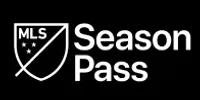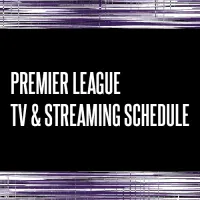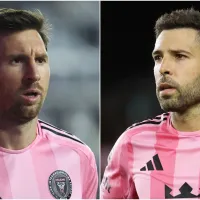After years of rumors, maybes, and wishful thinking, it has finally happened. Lionel Messi is will be signing to play in Major League Soccer. The global icon and Argentine World Cup winner is joining David Beckham’s Inter Miami CF after leaving Paris Saint-Germain of Ligue 1.
There have been plenty of huge – even legendary – footballers who have played professionally in the US over the years. Johan Cruyff. George Best. Bobby Moore. Carlos Alberto. Zlatan. Drogba. Pirlo. Bale. The list goes on and there’s no shortage of massive names that have played in US leagues.
But few, if any, can compare to Messi. Perhaps only two players can equal the historic stature of this move. The iconic Pelé, who arrived in New York with the Cosmos in 1975 and lifted soccer in the US to the mainstream. And David Beckham, Messi’s new boss, who signed with the LA Galaxy in 2007 and elevated what was then a still fledgling MLS into a new era.
One signing can change everything
It’s hard to compare these signings apples-to-apples, as they occurred in different eras with different circumstances.
Pelé stepped into US stadiums and TVs as almost a mythical figure. He was already known as the greatest soccer player ever, but something most Americans had never seen. He played his entire career to that point at Santos, so unless you happened to catch a stray World Cup highlight, you’d never seen Pelé before.
The hype and energy he injected into the North American Soccer League was immense. The Cosmos, even after he retired in 1977, remained a force and a good draw with fans. And teams in places like Seattle, Portland, Vancouver, San Jose, Tampa Bay, and Fort Lauderdale (Messi’s new home ground), had some success as well. But most other teams did not, and the league itself wasn’t sustainable. While the NASL, and Cosmos, didn’t survive, it left behind some legacy brands – and importantly an explosion in youth soccer participation. Pelé changed the game in the US forever.
Beckham came to US shores in a time where more international soccer was available to follow in the states. In addition to being a great player, Beckham being a tabloid celebrity elevated the general public awareness factor. Like Pelé’s Cosmos, Beckham’s Galaxy packed stadiums across the country, often moving games into bigger venues.
To bring Beckham in, MLS literally bent its rules. The Designated Player rule, which allowed teams to circumvent the salary cap to sign a star player, was invented to make the signing. And it has been expanded and remains in place today. And his signing had a ripple effect. His contract came with the option to own an expansion team at the then-current $25 million price tag. Beckham, with primary owner Jorge Más, eventually exercised this option in 2014 on the franchise that would become Inter Miami CF.
Will the Messi signing match – or eclipse – past watershed moments?
And now Messi arrives on a scene vastly different from not only the 1970s, but also the mid-2000s. MLS now has 30 teams. There are dozens of purpose-built soccer venues all across the country. Not only at the top, but in a much more robust lower division setup as well.
And international soccer is incredibly easier to watch today than it was even in 2007. Just about everyone knows who Messi is, and any soccer fan has seen him play. Whether with Barcelona, PSG, or Argentina, American sports fans have been thoroughly exposed to the player that has rightfully earned a place in the GOAT argument.
So Messi arrives not as a mysterious enigma or novelty. He’s a known quantity. But like Pelé, Beckham, and most of the other massive players who’ve signed here, he is in the twilight of his career.
Our Pick:Includes: Every regular season game, MLS Cup Playoffs, Leagues Cup, & More |
 |
willwill
It will definitely give the league more credibility, or at least interest, on the international scene. Much like Ligue 1 and PSG saw a monster bump up in things like social media followers and sponsors, so will MLS and Inter Miami. But odds are it won’t be the massive “soccer fever” overnight explosion from nearly nothing to phenomenon like we saw in the 70s. There are already teams drawing 40-50,000 fans on a regular basis. American soccer is in a better place than it was 20, and 50, years ago. So the effects will likely be much more nuanced.
It will be interesting to see if the Messi signing has the lasting impact that Pelé and Beckham did. It’s tough to say whether this is a bigger event than either of those two historic signings. It feels like it is, but that may be just because we are living in the moment as it happens.
The deal is not yet official, so the details remain to be seen. What rules may have been bent this time? How will it effect similar signings down the line? How long will he actually play here? It’s entirely possible that Messi’s time in MLS comes to an end before the World Cup takes over the public consciousness in 2026. And that event is arguably a much bigger deal in the grand scheme of things than a single player signing.
The next “big” signing might actually be the biggest
Messi is massive. A name that transcends sports. But signing a soon-to-be-36-year old, no matter who they are, is not the mark of a truly elite club or league.
The biggest moment will truly come when MLS can sign players of Messi’s stature (realistically a rung or two below) in their prime. Messi is going to bring more eyeballs than ever to MLS. But what will those eyeballs be seeing surrounding the legendary #10? His new club currently sits in last place in the MLS Eastern Conference and just sacked their manager. One man cannot lift the overall level of a competition on his own. MLS offers entertaining soccer, quality players, globally-known cities, good venues and great atmospheres. But it’s not the Premier League. It’s not LaLiga. It’s not even Ligue 1.
The endgame must be for American clubs to compete with the likes of Manchester, Madrid, Barcelona, Juventus and Bayern for superstars that are ten years younger than Messi is. Five years from now, someone we’ve not yet heard of might turn out to be the most influential signing to ever come to America.
Is Messi another step on the ladder to getting there? Or another retirement tour? Only time will tell.
Photos: Imago














